Hidden beneath the bustling streets of Istanbul is the vast underground Basilica Cistern, a beautiful piece of Byzantine engineering and the most unusual tourist attraction in the city. A captivating testament to the ingenuity of Byzantine architects and the rich history of this vibrant city.

A Glimpse into History
Built in the 6th century during the reign of Byzantine Emperor Justinian I, the Basilica Cistern served as a crucial water filtration system for the Great Palace of Constantinople. Its construction was part of a grand effort to secure a reliable water supply for the city during times of siege or drought.
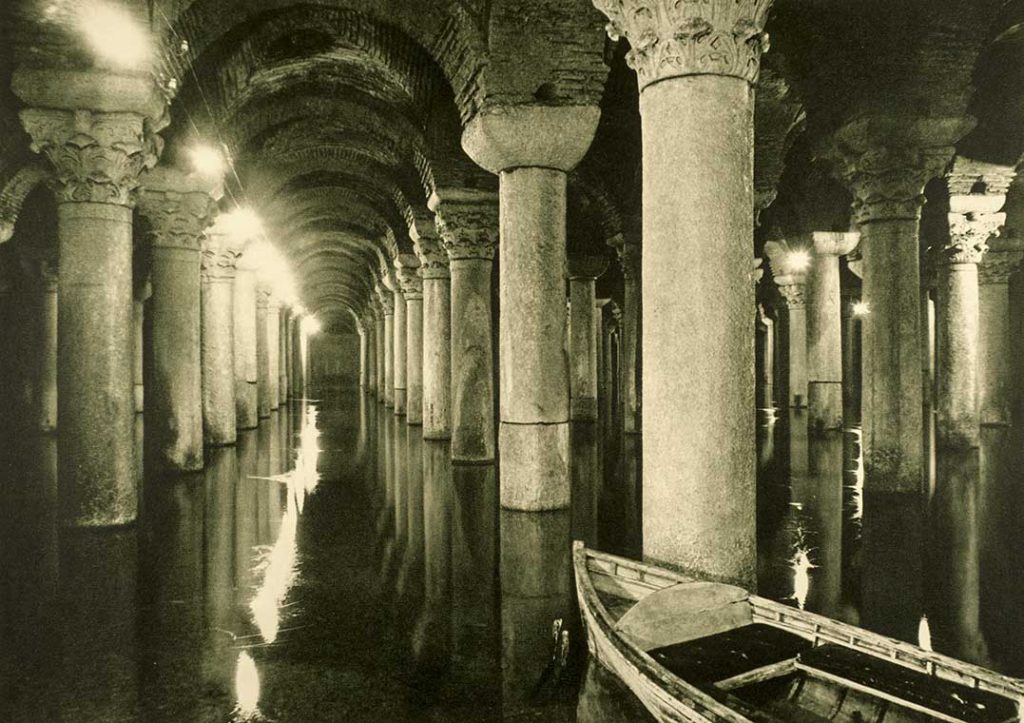
Architectural Marvels
The cistern spans an impressive 9,800 square meters and has a capacity of over 80,000 cubic meters of water. Its most striking feature is its forest of 336 marble columns, each standing at a towering 9 meters tall. These columns, sourced from various ancient ruins across the Byzantine Empire, support the arched ceiling and create an otherworldly atmosphere as visitors wander through the dimly lit chambers.
Medusa’s Gaze
Among the many wonders within the Basilica Cistern, none capture the imagination quite like the two Medusa heads that serve as the bases for two of the columns.
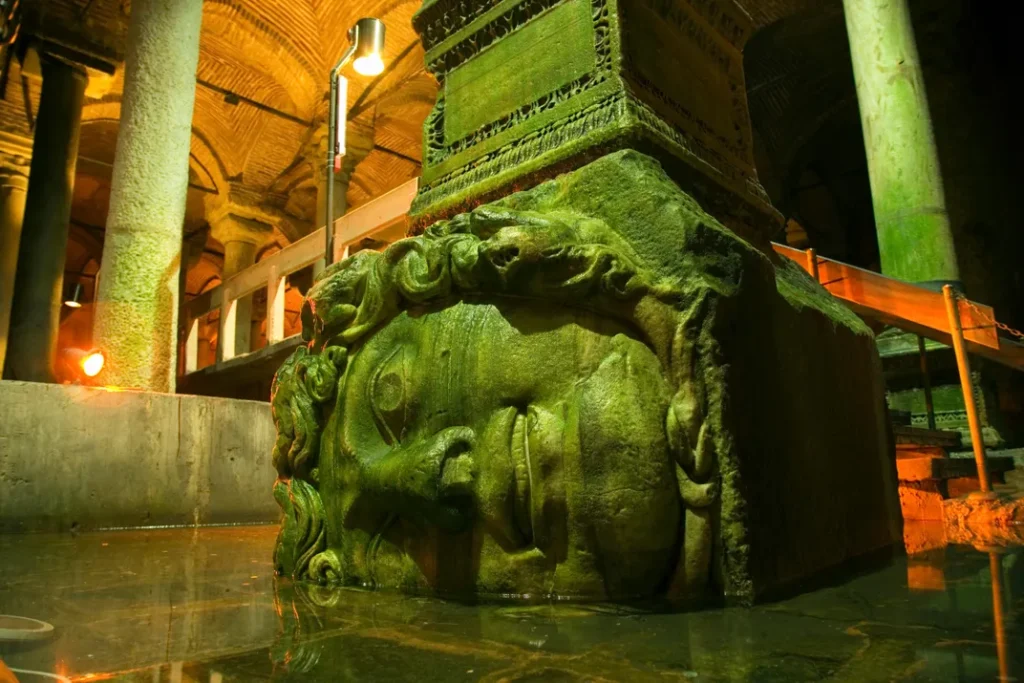
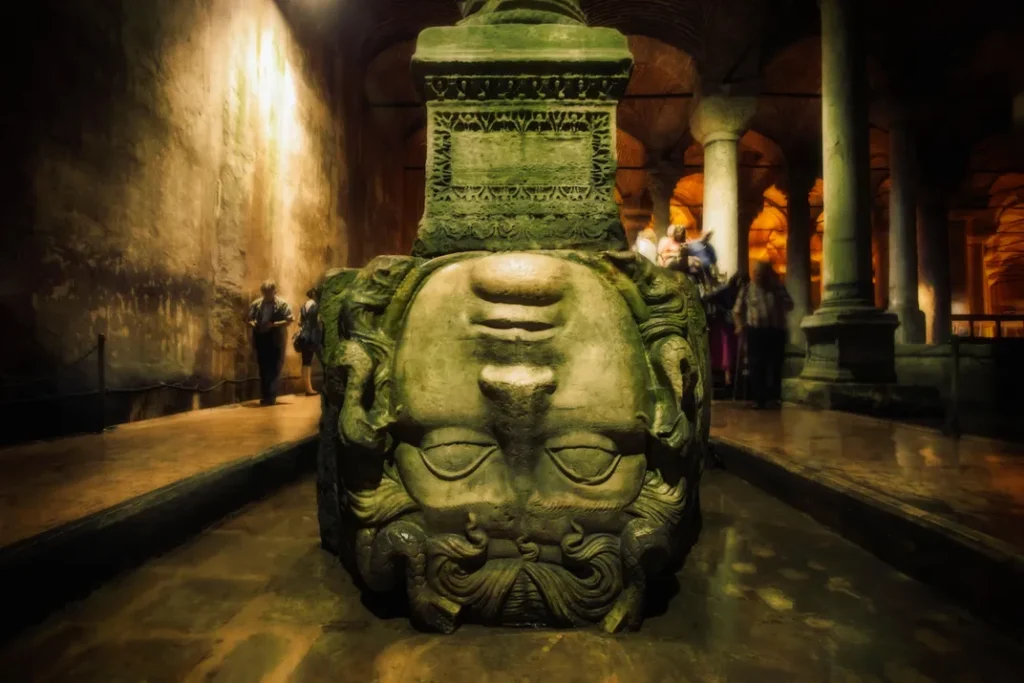
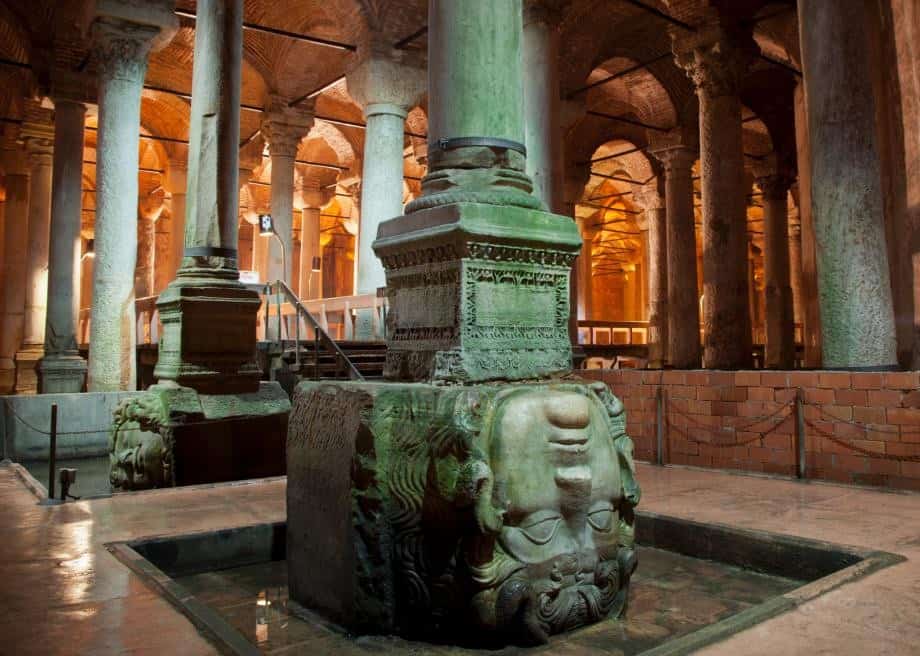
Neither of the Medusa heads are facing upright, with one positioned sideways and the other resting upside-down, sparking countless theories and legends about their origins and placement. Some speculate that they were repurposed from an earlier structure, while others believe they were deliberately placed to negate the snake-haired monster’s powers and ward off evil spirits.
Restoration and Preservation Efforts
Over the centuries, the Basilica Cistern fell into disrepair and was forgotten by all but a few locals who knew of its existence and who collected water, and even fish, by lowering buckets through holes in their basements.
It wasn’t until the 16th century that it was rediscovered by European travelers, who were awestruck by its beauty and historical significance. Since then, various restoration efforts have been undertaken to preserve this architectural gem for future generations to appreciate.
Restorations were launched in 2017 and during the process, it was discovered that the cistern was at risk of collapsing in the event of an earthquake, which the country is prone to. As part of the restoration, the iron bearings between the columns that had been fitted in the early years of the republic and corroded over time were replaced so the structure can withstand potential tremors.
Visitor Experience
Today, the Basilica Cistern remains one of Istanbul’s most popular tourist attractions, drawing visitors from around the world to marvel at its ancient grandeur. Guided tours provide insight into its history and significance, while the soft lighting and eerie ambiance create an unforgettable experience for all who venture into its depths.
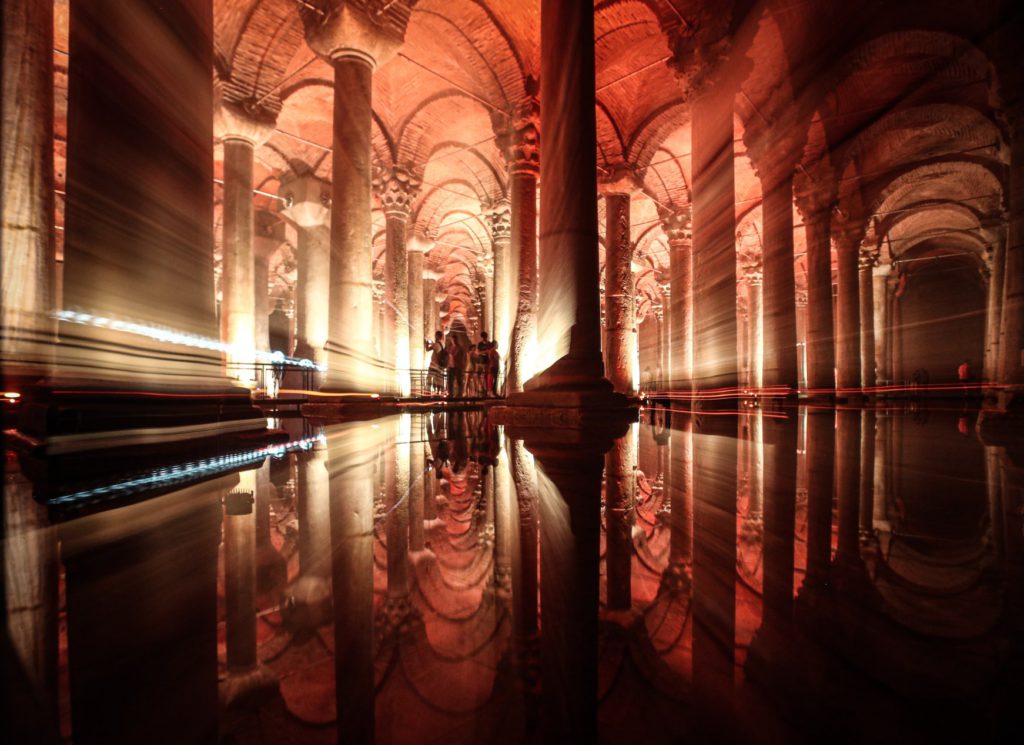
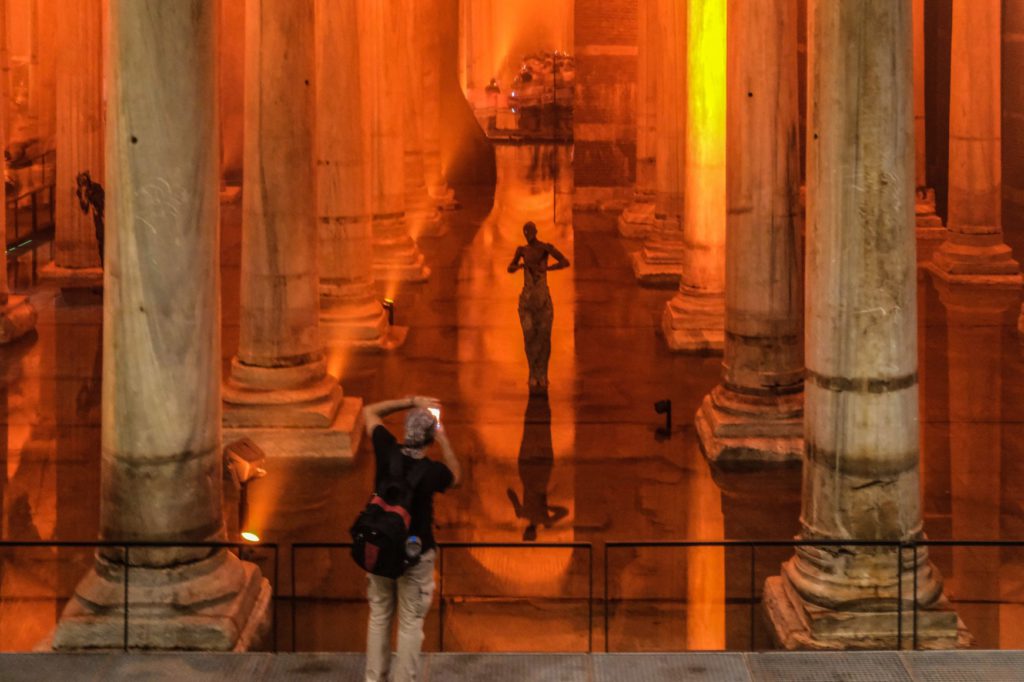

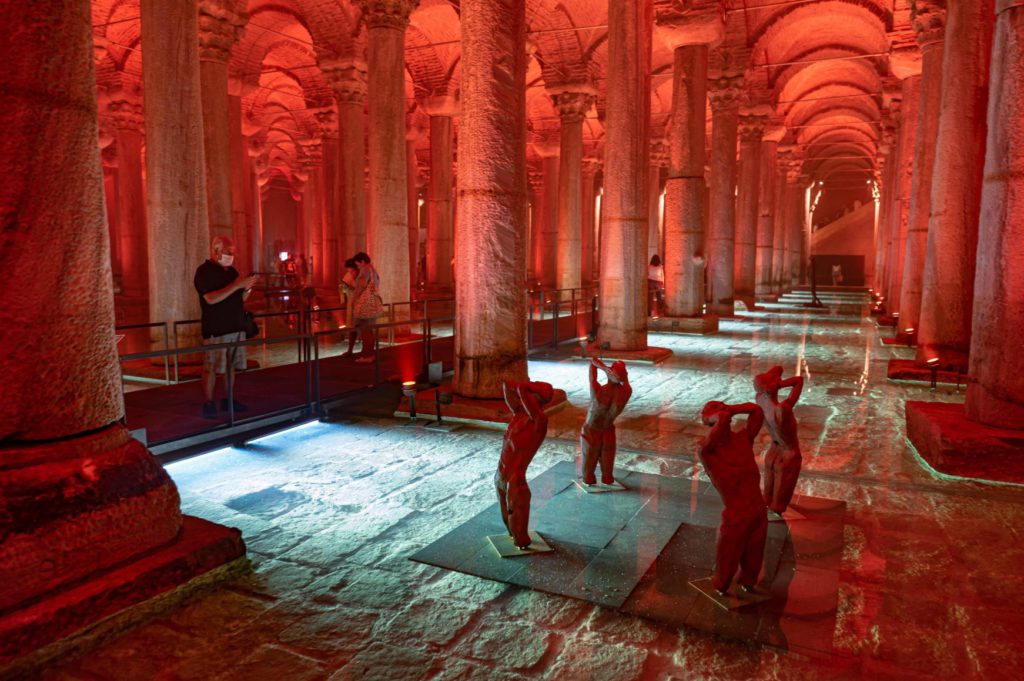
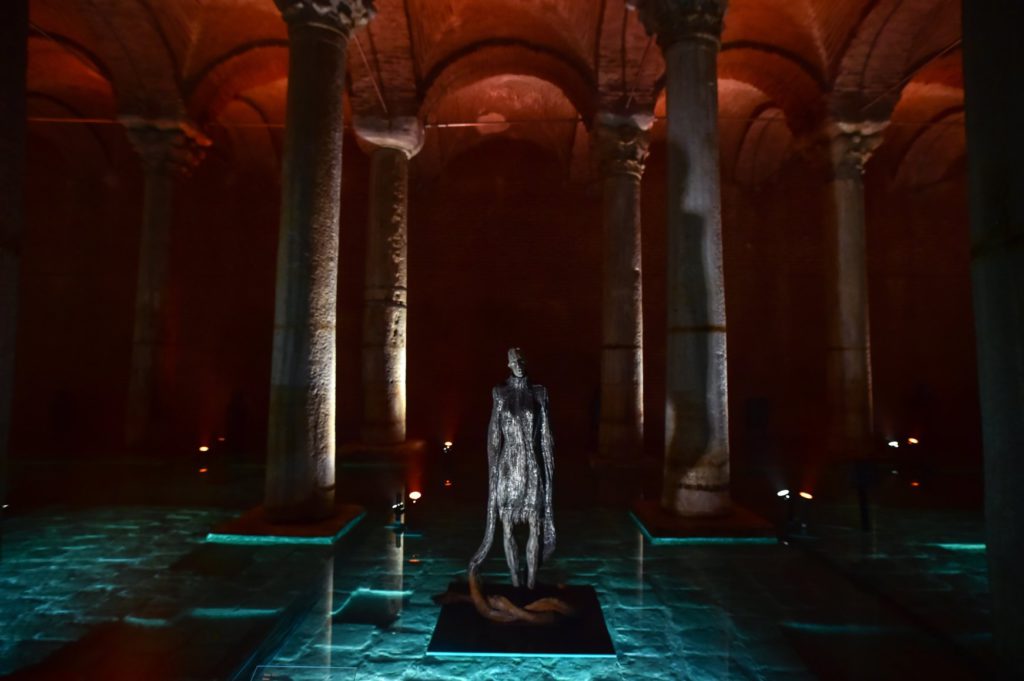
The Basilica Cistern stands as a silent witness to the passage of time, bearing testament to the enduring legacy of Byzantine engineering and the rich tapestry of Istanbul’s history. As visitors descend into its depths, they are transported back in time to an era of emperors and conquests, where the echoes of the past reverberate through the hallowed halls of this remarkable subterranean sanctuary.
Sources: DK Eyewitness Travel Turkey/Daily Sabah








